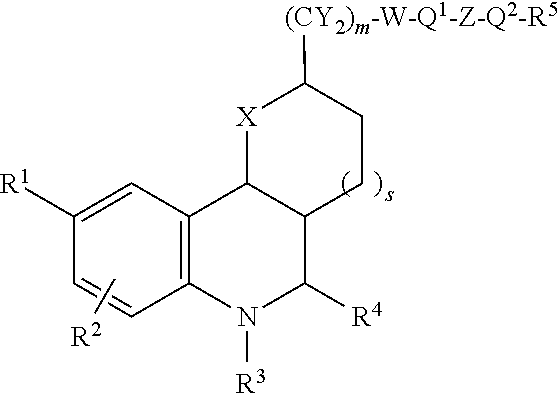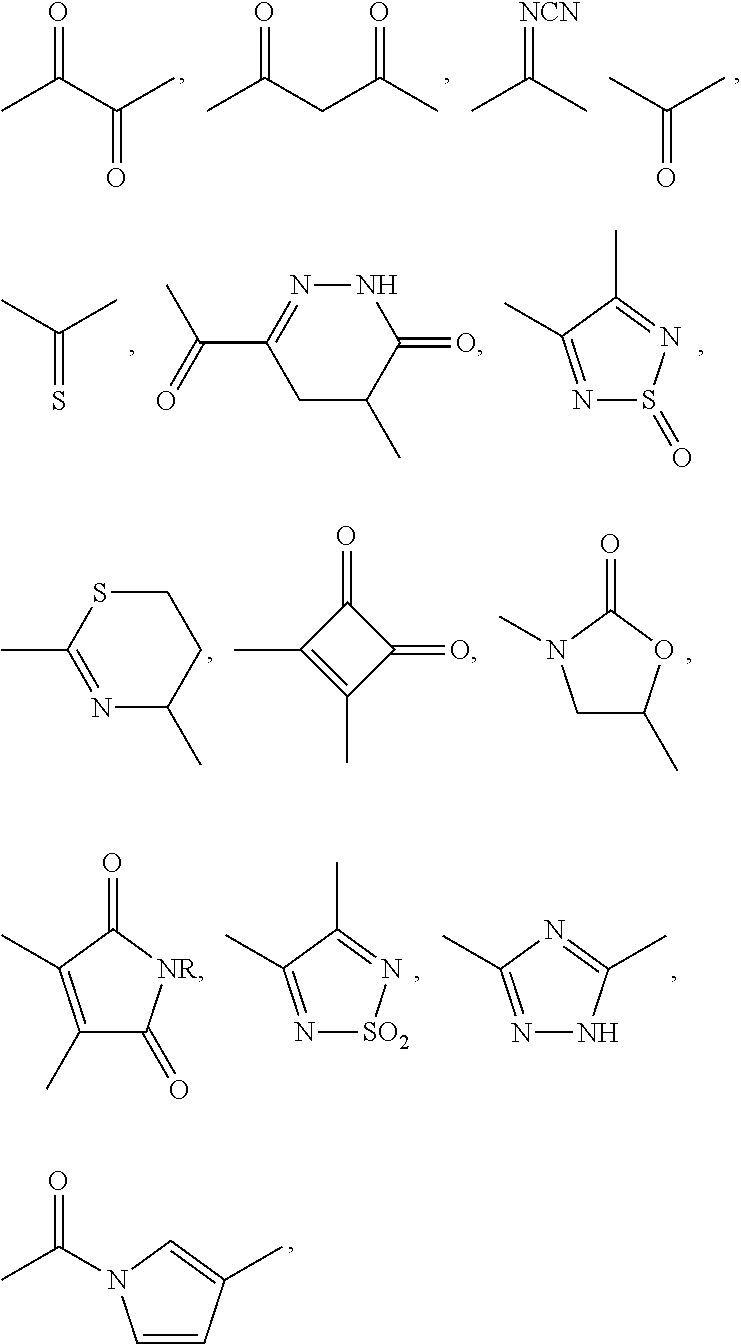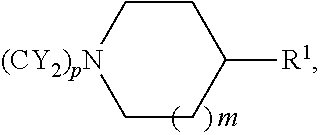Substituted tetrahydroquinolines
a technology of tetrahydroquinoline and substituted tetrahydroquinoline, which is applied in the direction of biocide, drug composition, immunological disorders, etc., can solve the problems of cell death, chromosomes cannot be distributed correctly over the daughter cells, and spindle fibre collaps
- Summary
- Abstract
- Description
- Claims
- Application Information
AI Technical Summary
Benefits of technology
Problems solved by technology
Method used
Image
Examples
example 2
Synthesis of 3-amino-4-[((2R,4aS,5R,10bS)-5-phenyl-9-trifluoromethyl-3,4,4a,5,6,10b-hexahydro-2H-pyrano[3,2-c]quinolin-2-ylmethyl)amino]-cyclobut-3-ene-1,2-dione 4 and similar compounds
[0180]
[0181]C. Analogous 2-step reactions were carried out with the starting material 1 and the following substrates (for example see above):
[0182]
example 3
Synthesis of 2-[((2R,4aS,5R,10bS)-5-phenyl-9-trifluoromethyl-3,4,4a,5,6,10b-hexahydro-2H-pyrano[3,2-c]quinolin-2-ylmethyl)amino]thiazole-4-carboxylic acid (2-dimethylaminoethyl)amide 7
[0183]
[0184]d. Compound 1 (200 mg, 0.55 mmol) was dissolved in 5 ml of THF / DMF (1:1), thiocarbonylimidazole (98.3 mg, 0.55 mmol) was added, and the mixture was stirred at RT for 15 h. Ammonia solution (0.68 ml, 25% in water) was subsequently added, and the mixture was stirred at RT for a further 2.5 h. The reaction solution was freed from the readily volatile solvents, and water was added to the residue. The precipitated solid was filtered off, rinsed with water and purified by column chromatography (ethyl acetate / cyclohexane), giving a colourless solid (5,175 mg, 0.42 mmol, 75%).
[0185]e. Compound 5 (94 mg, 0.22 mmol) was dissolved in 2 ml of THF / DMF (1:1), ethyl bromopyruvate (43.5 mg, 0.22 mmol) was added, and the mixture was stirred at 70° C. for 15 h. The reaction solution was freed from the readil...
example 4
Synthesis of N-((4aS,5R,10bS)-5-phenyl-9-trifluoromethyl-3,4,4a,5,6,10b-hexahydro-2H-pyrano[3,2-c]quinolin-2-ylmethyl)-4H-1,2,4-triazole-3,5-diamine 9 and N-cyano-N′-((4aS,5R,10bS)-5-phenyl-9-trifluoromethyl-3,4,4a,5,6,10b-hexahydro-2H-pyrano[3,2-c]quinolin-2-ylmethyl)-(2-dimethylaminoethyl)guanidine 10
[0187]
[0188]g. Compound 1 (300 mg, 0.83 mmol) was dissolved in 8 ml of ethanol, dimethyl cyanodithioiminocarbonate (120 mg, 0.83 mmol) was added, and the mixture was stirred at 50° C. for 15 h. The reaction solution was evaporated to dryness in vacuo, and the brownish residue was reacted further without further purification.
[0189]h. Half of the crude compound 8 (about 190 mg, 0.41 mmol) was taken up in 5 ml of ethanol, hydrazinium hydroxide (1 ml) was added, and the mixture was stirred at 80° C. for 2 h in a pressure flask. The reaction suspension was evaporated to dryness in vacuo, the brownish residue was suspended in MeOH (10 ml)), and water (10 ml) was added. The beige residue whi...
PUM
| Property | Measurement | Unit |
|---|---|---|
| temperature | aaaaa | aaaaa |
| temperature | aaaaa | aaaaa |
| weight | aaaaa | aaaaa |
Abstract
Description
Claims
Application Information
 Login to View More
Login to View More - R&D
- Intellectual Property
- Life Sciences
- Materials
- Tech Scout
- Unparalleled Data Quality
- Higher Quality Content
- 60% Fewer Hallucinations
Browse by: Latest US Patents, China's latest patents, Technical Efficacy Thesaurus, Application Domain, Technology Topic, Popular Technical Reports.
© 2025 PatSnap. All rights reserved.Legal|Privacy policy|Modern Slavery Act Transparency Statement|Sitemap|About US| Contact US: help@patsnap.com



